Abstract
1. Respiratory evaporative heat loss in the rabbit has a minimum value of 0-2-0-3 W/kg and a maximum value of about 1-1 W/kg in non-evaporatively limited environments. 2. Both skin temperature and hypothalamic temperature influence respiratory evaporative heat loss, and they do so in a multiplicative fashion. Thus, at low skin temperature the hypothalamic temperature threshold for the onset of panting is above normal hypothalamic temperature and hypothalamic thermosensitivity is high. On the other hand, at high skin temperatures, the hypothalamic temperature threshold for the onset of panting is well below normal hypothalamic temperature, but hypothalamic thermosensitivity is greatly reduced. 3. The influence of mean skin temperature (Tsk) and hypothalamic temperature on respiratory evaporative heat loss (Eres) in the rabbit can be described by the equation: Eres=1-1-0-08 (Tsk-39-7) (Thy-42-9) greater than or equal to 0-3 W/kg. 4. Thus, the ability of a lowered mean skin temperature to increase the thermosensitivity of the hypothalamus in response to local temperature changes applies to heat loss mechanisms as well as heat production mechanisms. It is suggested that the characteristics of this peripheral input into the C.N.S. are fulfilled by tonic cold fibre input originating from the peripheral cold receptors on the body surface.
Full text
PDF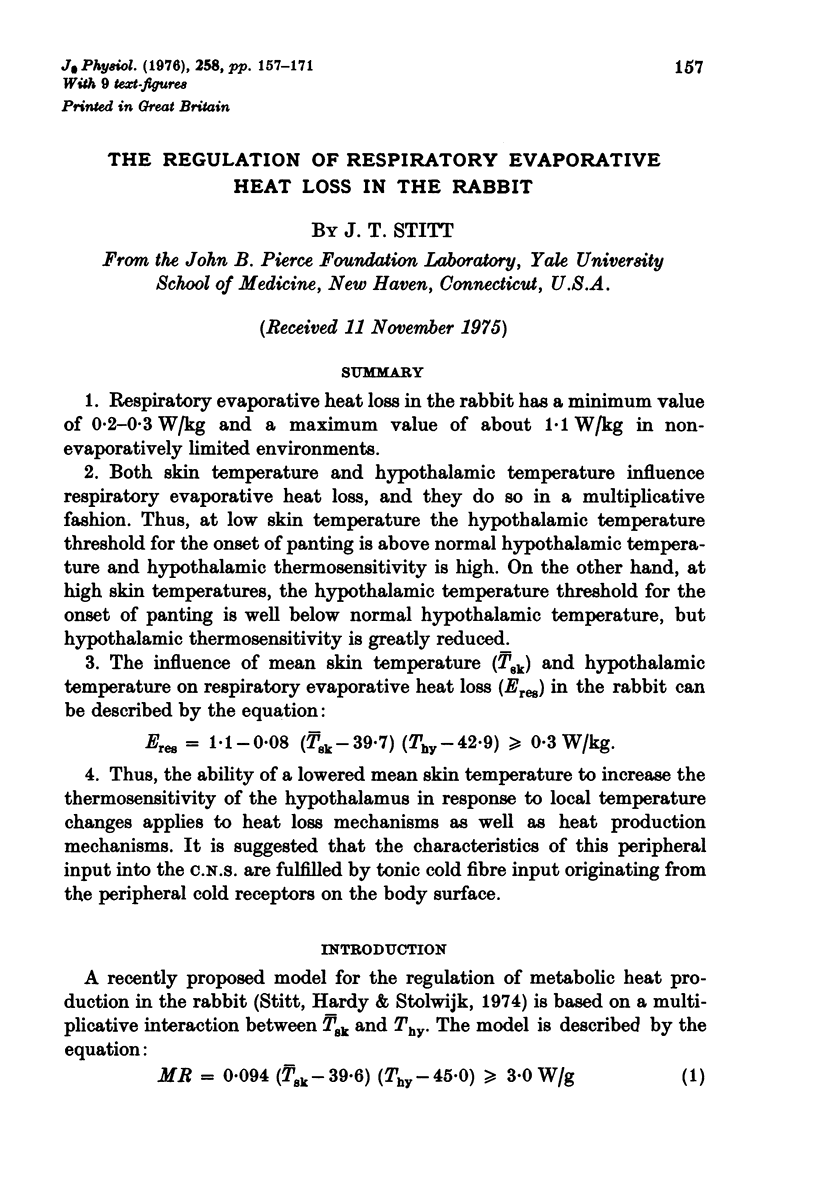
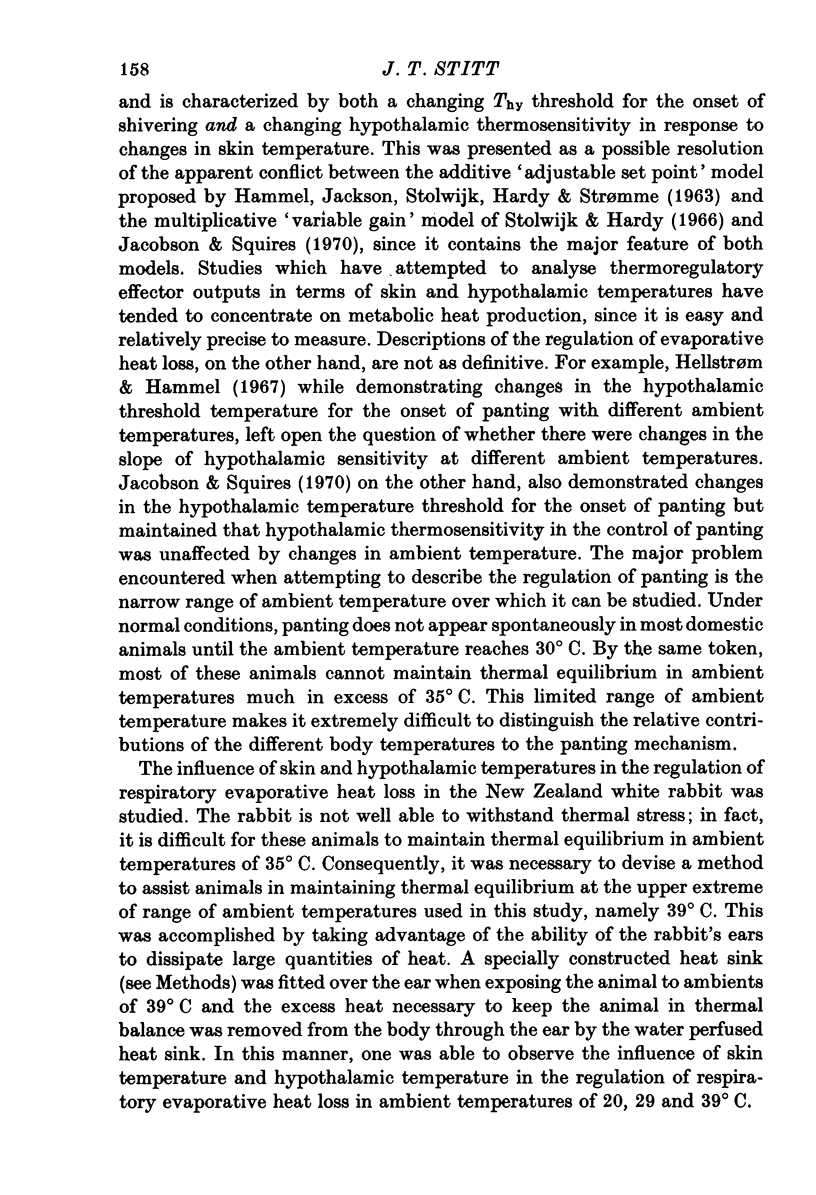
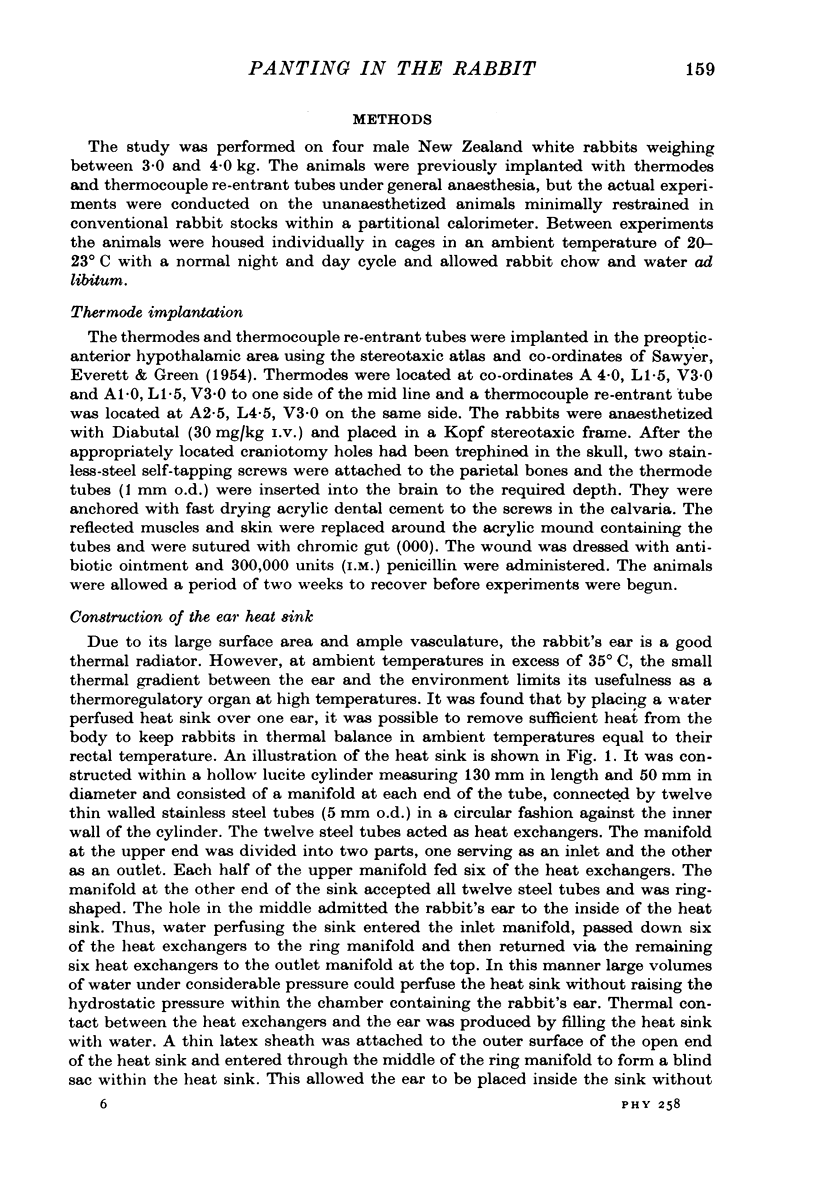
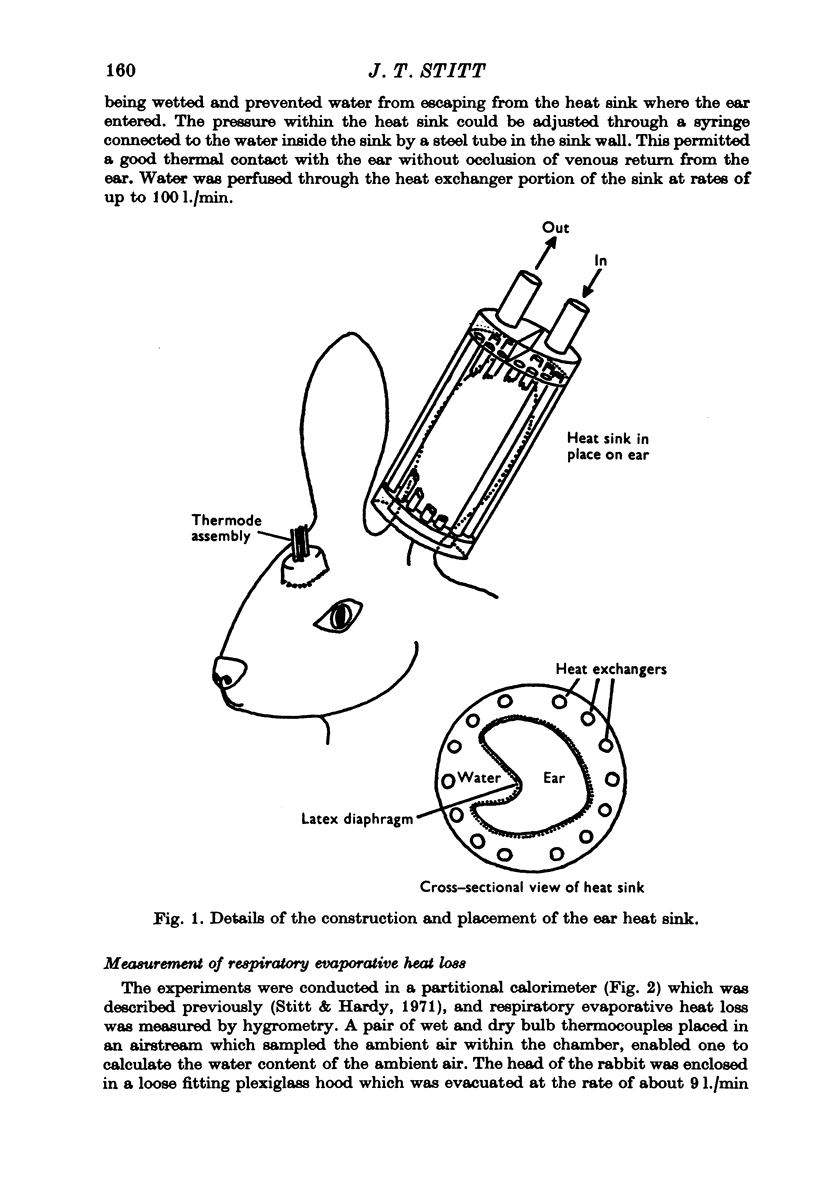
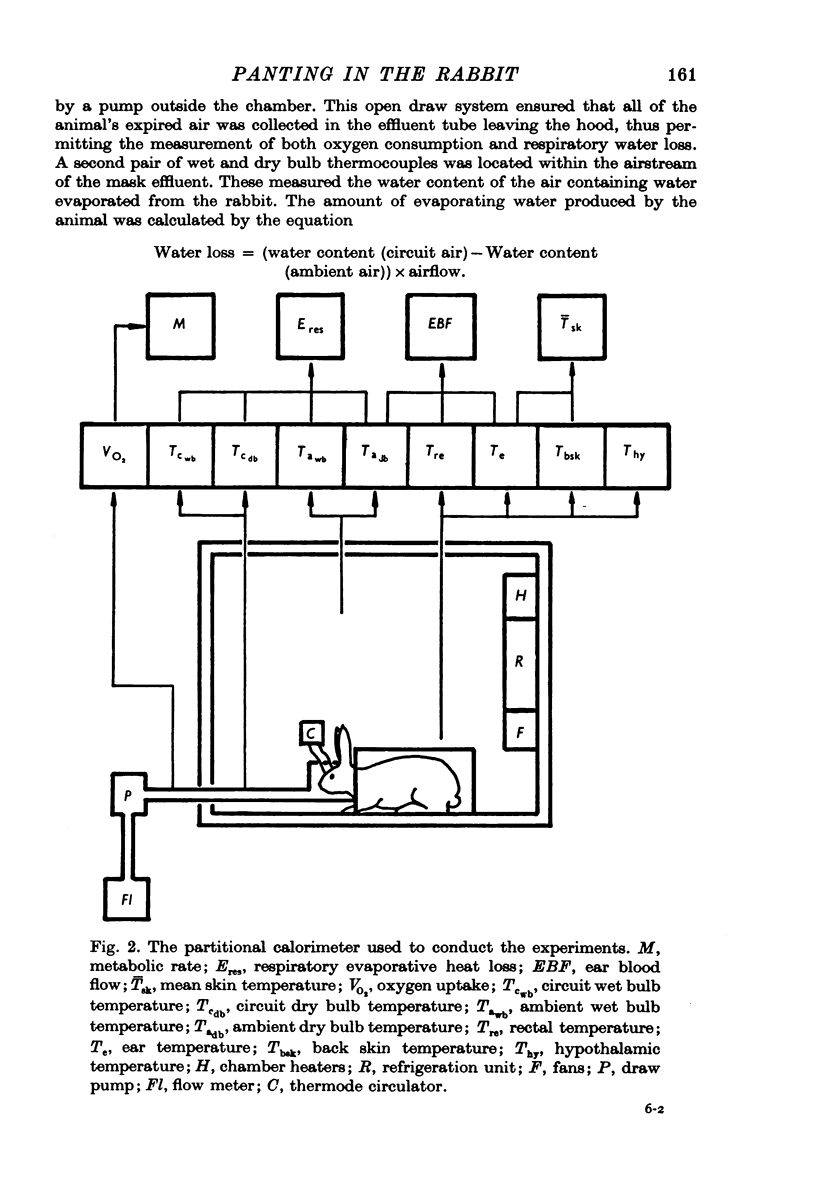
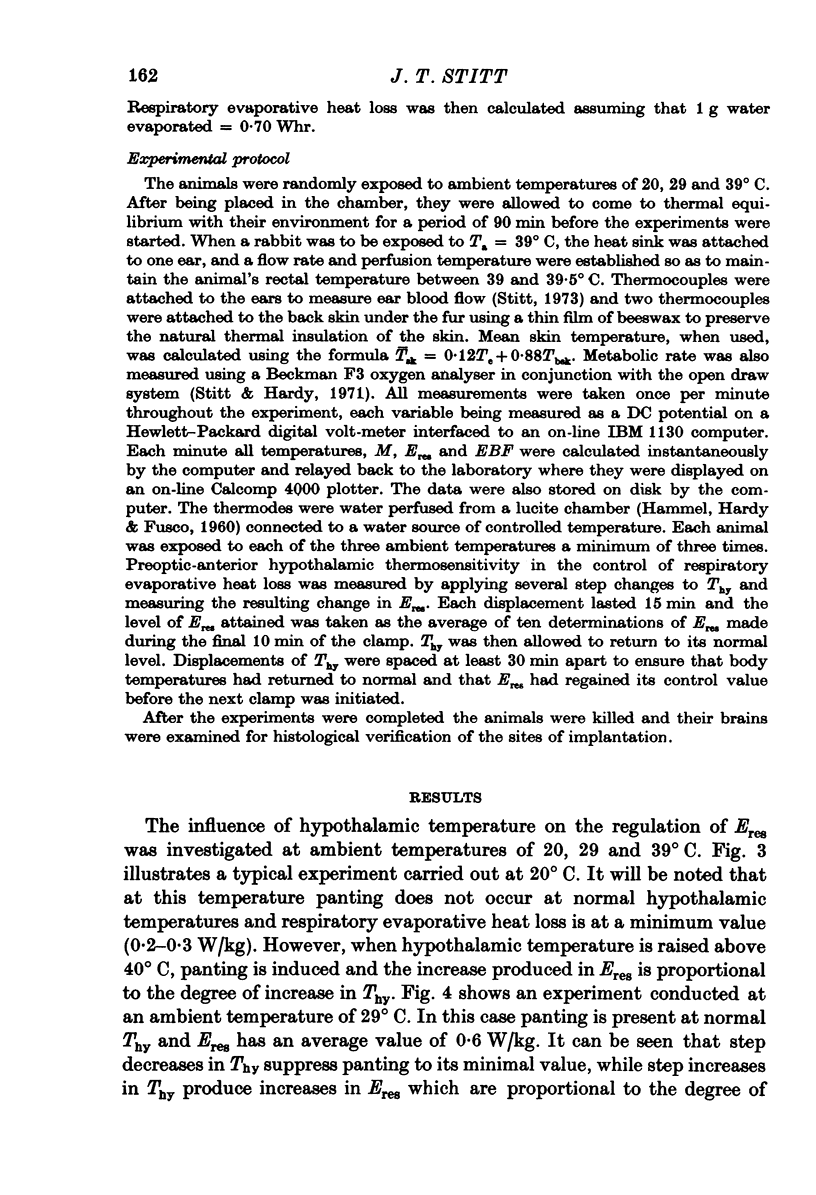
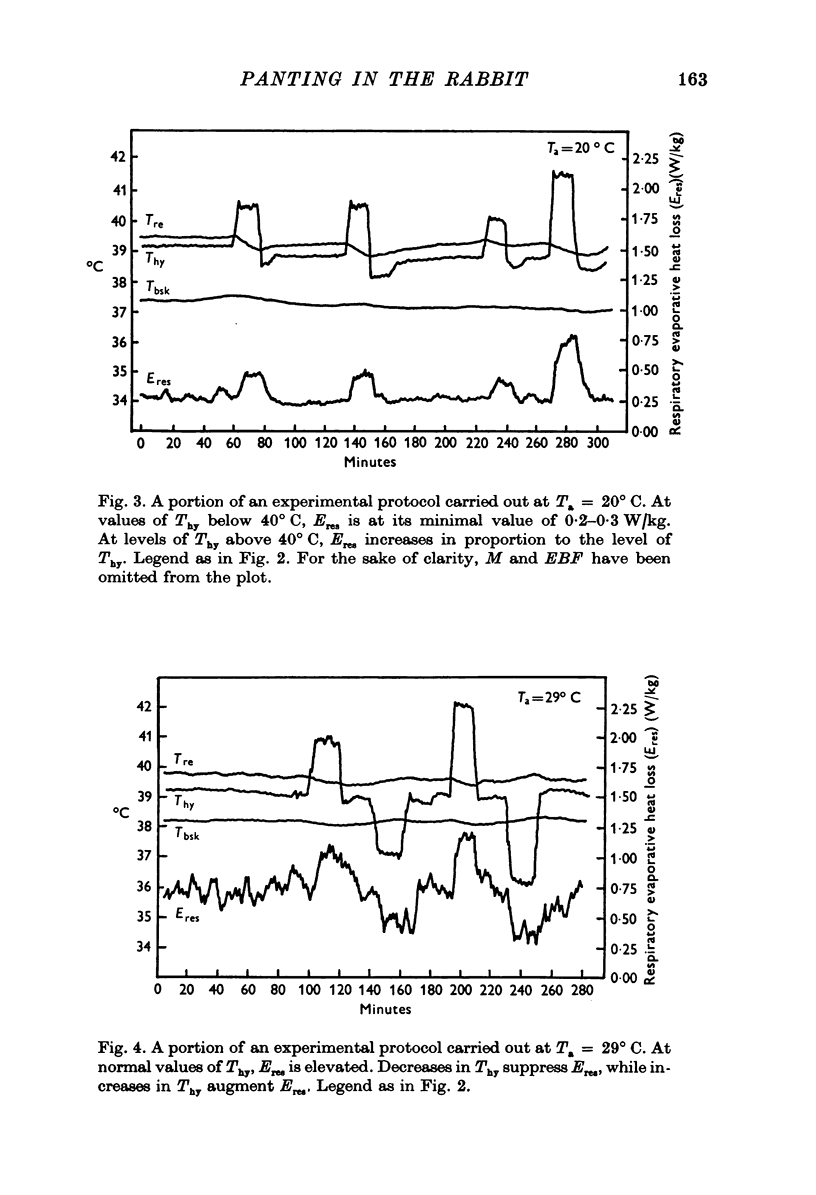
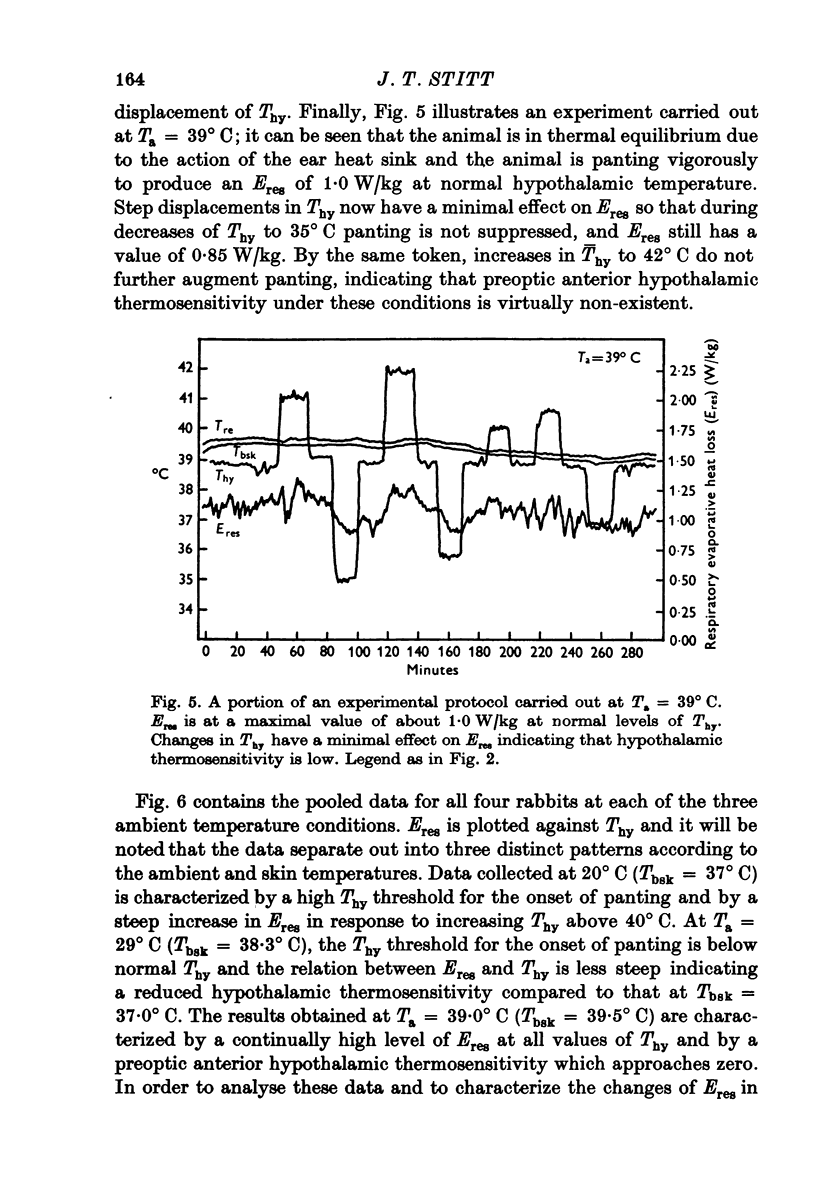
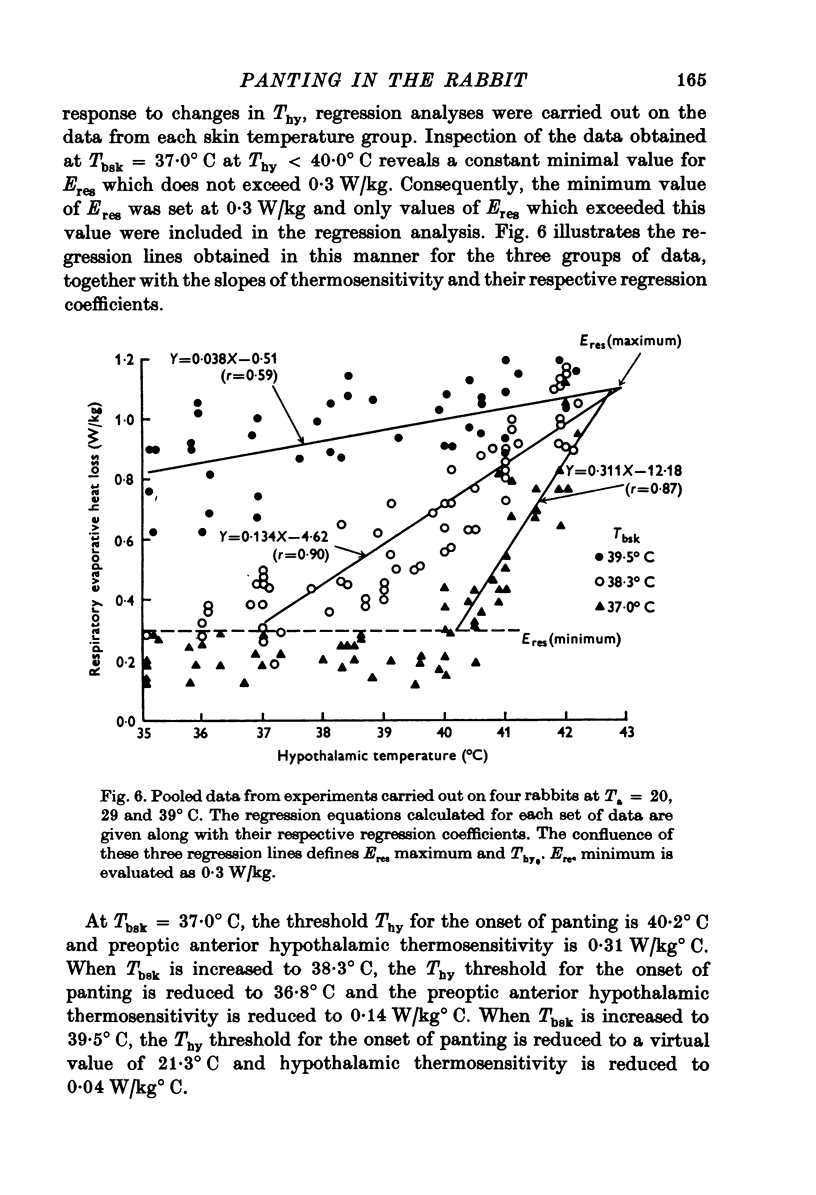
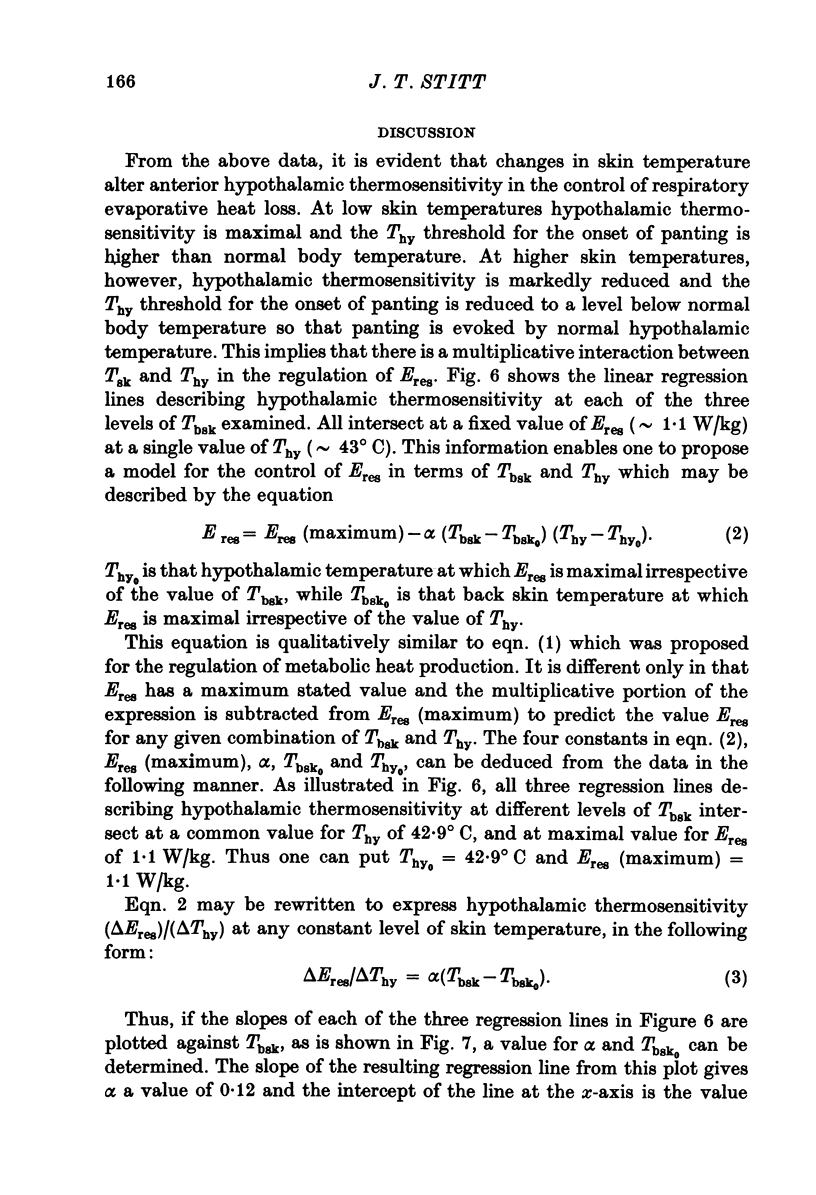
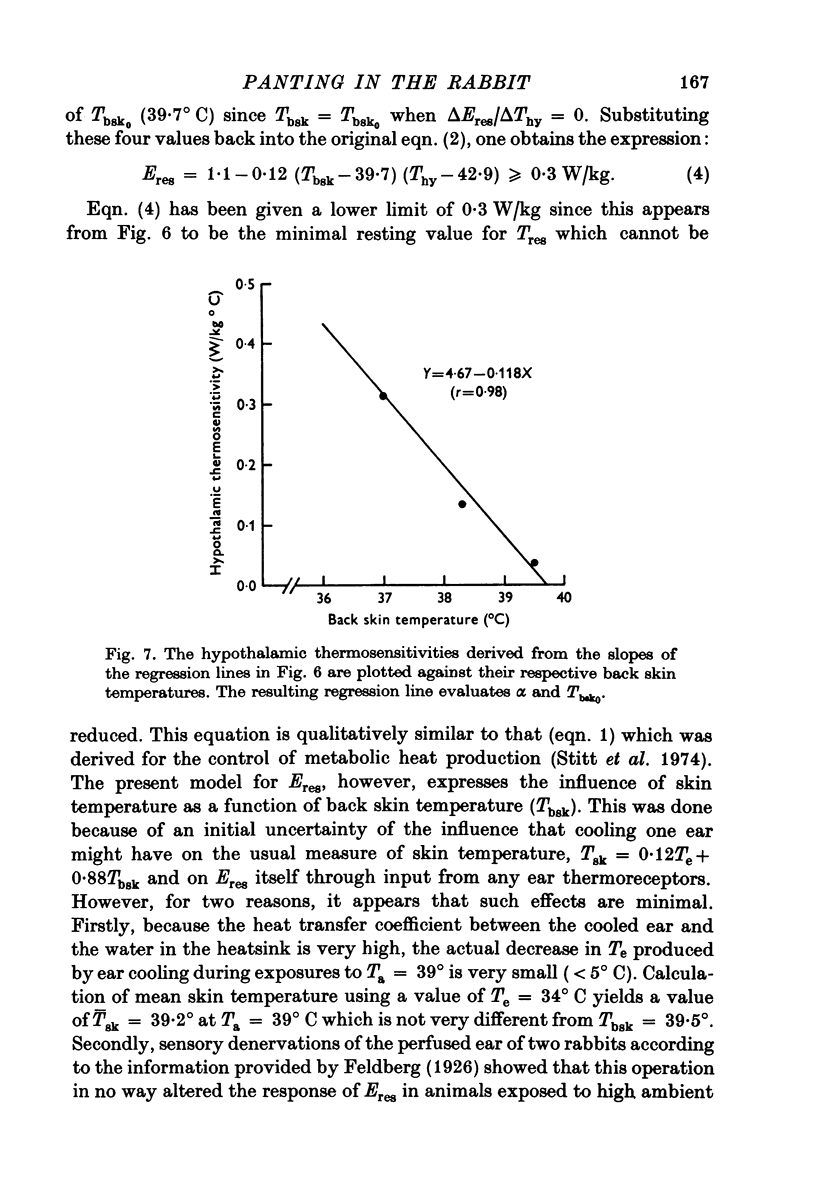
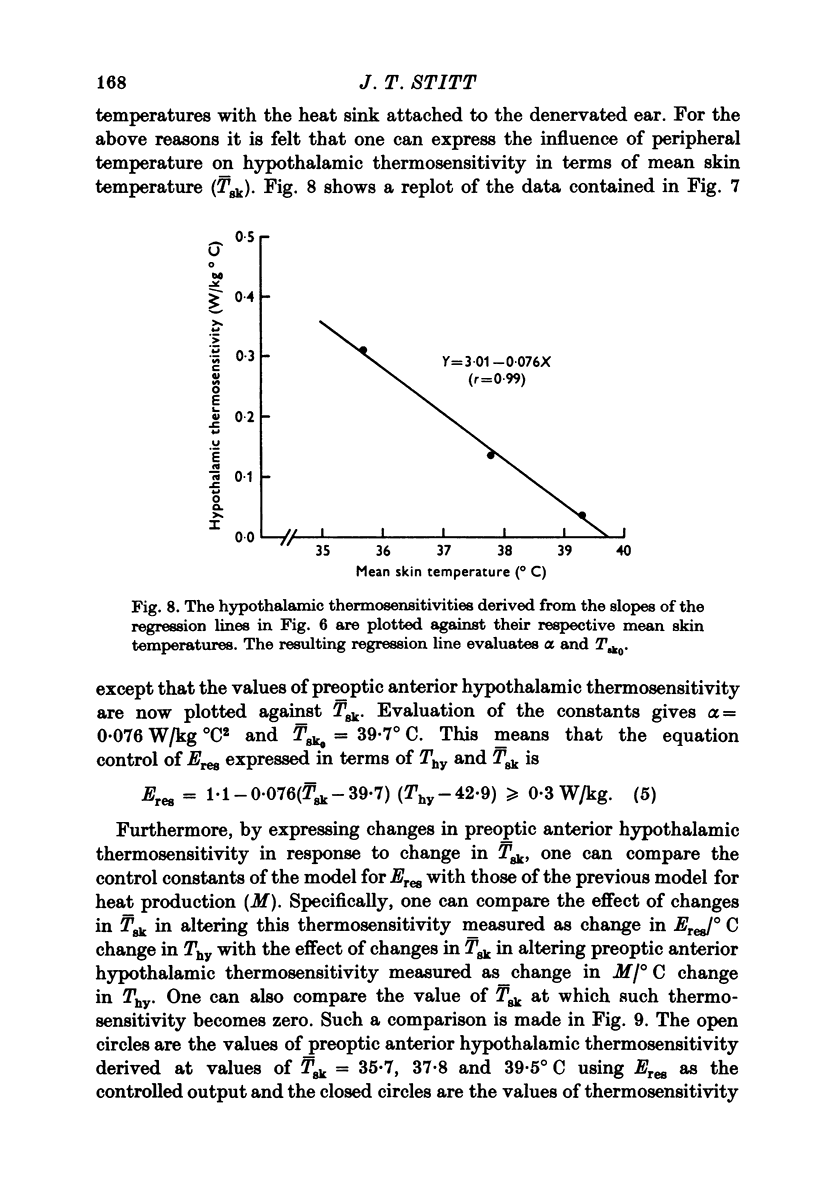
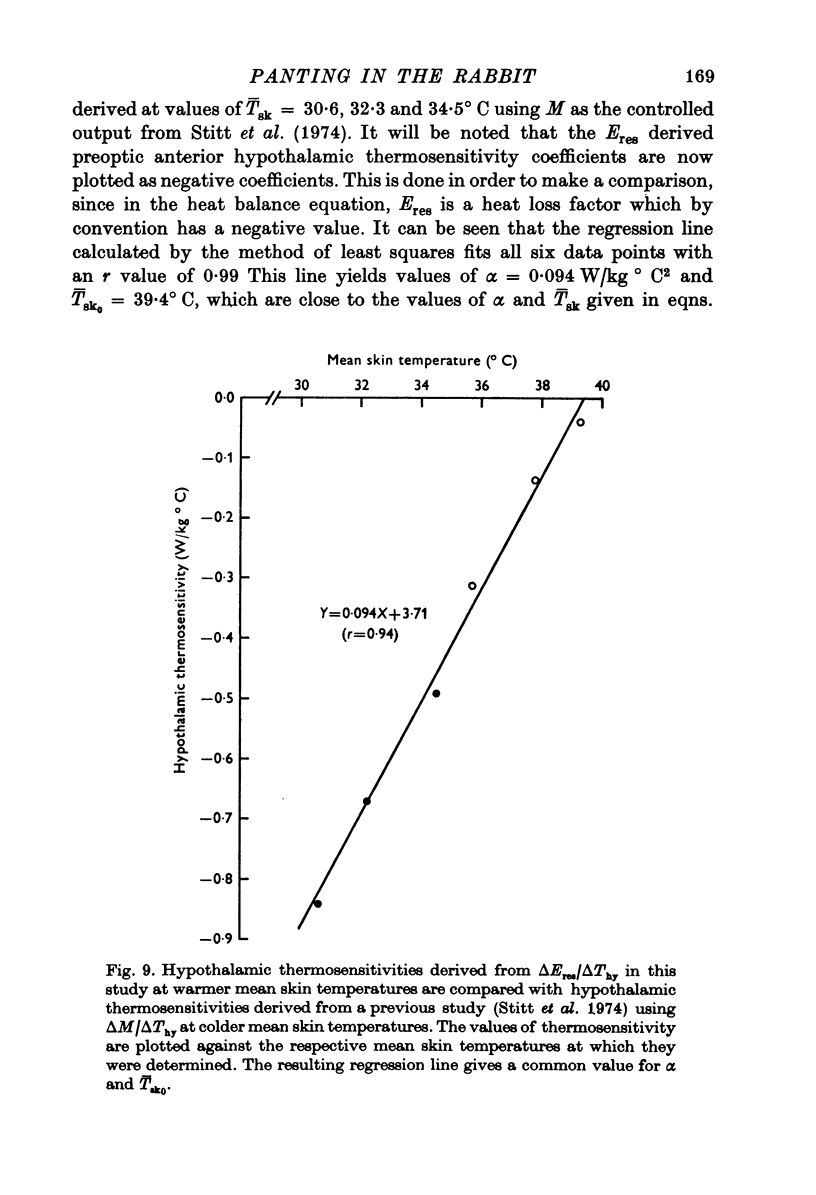
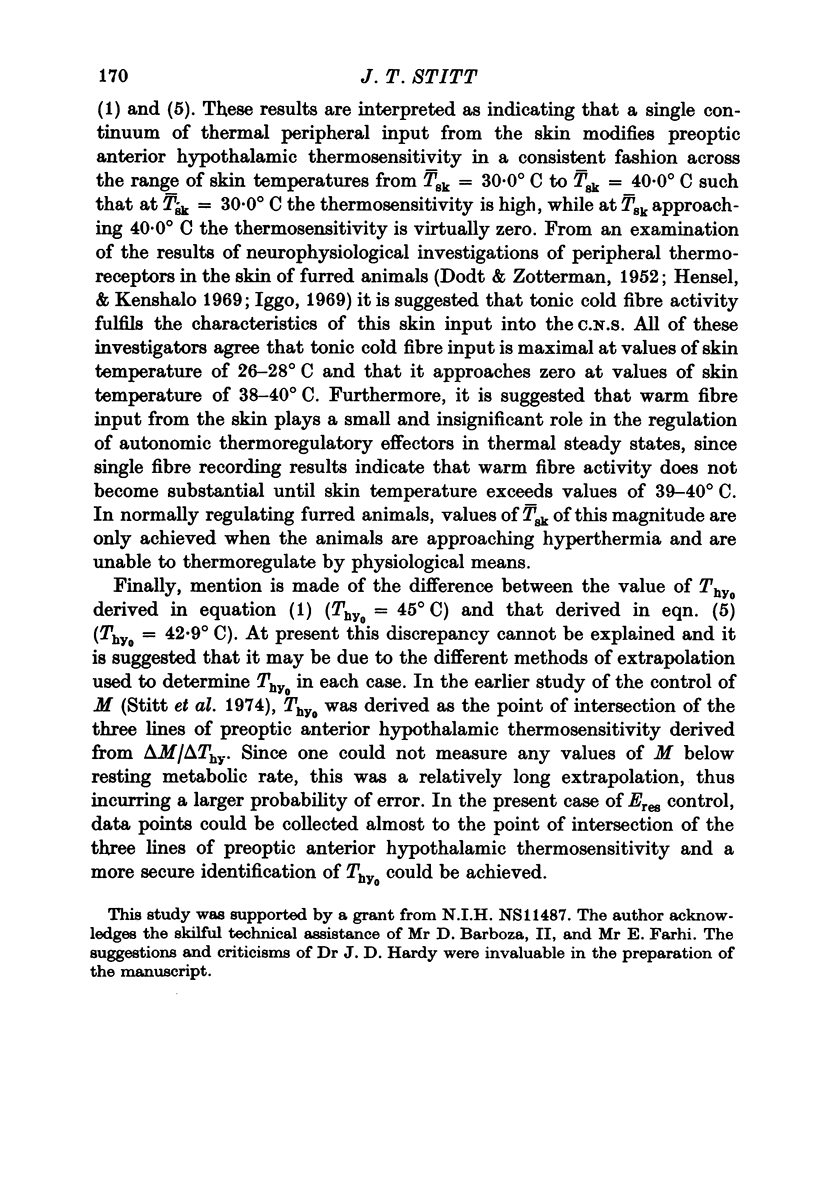
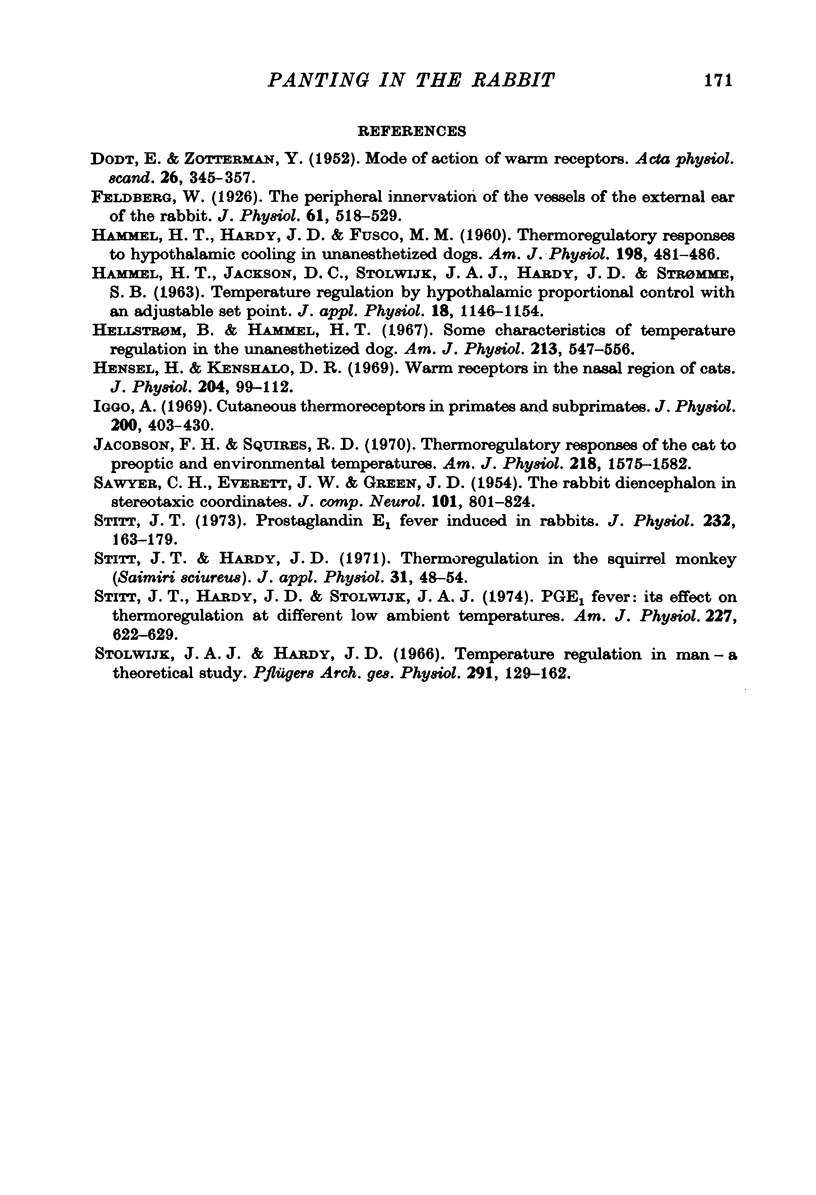
Selected References
These references are in PubMed. This may not be the complete list of references from this article.
- DODT E., ZOTTERMAN Y. Mode of action of warm receptors. Acta Physiol Scand. 1952;26(4):345–357. doi: 10.1111/j.1748-1716.1952.tb00916.x. [DOI] [PubMed] [Google Scholar]
- Feldberg W. The peripheral innervation of the vessels of the external ear of the rabbit. J Physiol. 1926 Aug 6;61(4):518–529. doi: 10.1113/jphysiol.1926.sp002313. [DOI] [PMC free article] [PubMed] [Google Scholar]
- HAMMEL H. T., HARDY J. D., FUSCO M. M. Thermoregulatory responses to hypothalamic cooling in unanesthetized dogs. Am J Physiol. 1960 Mar;198:481–486. doi: 10.1152/ajplegacy.1960.198.3.481. [DOI] [PubMed] [Google Scholar]
- HAMMEL H. T., JACKSON D. C., STOLWIJK J. A., HARDY J. D., STROMME S. B. TEMPERATURE REGULATION BY HYPOTHALAMIC PROPORTIONAL CONTROL WITH AN ADJUSTABLE SET POINT. J Appl Physiol. 1963 Nov;18:1146–1154. doi: 10.1152/jappl.1963.18.6.1146. [DOI] [PubMed] [Google Scholar]
- Hellstrom B., Hammel H. T. Some characteristics of temperature regulation in the unanesthetized dog. Am J Physiol. 1967 Aug;213(2):547–556. doi: 10.1152/ajplegacy.1967.213.2.547. [DOI] [PubMed] [Google Scholar]
- Hensel H., Kenshalo D. R. Warm receptors in the nasal region of cats. J Physiol. 1969 Sep;204(1):99–112. doi: 10.1113/jphysiol.1969.sp008901. [DOI] [PMC free article] [PubMed] [Google Scholar]
- Iggo A. Cutaneous thermoreceptors in primates and sub-primates. J Physiol. 1969 Feb;200(2):403–430. doi: 10.1113/jphysiol.1969.sp008701. [DOI] [PMC free article] [PubMed] [Google Scholar]
- Jacobson F. H., Squires R. D. Thermoregulatory responses of the cat to preoptic and environmental temperatures. Am J Physiol. 1970 Jun;218(6):1575–1582. doi: 10.1152/ajplegacy.1970.218.6.1575. [DOI] [PubMed] [Google Scholar]
- SAWYER C. H., EVERETT J. W., GREEN J. D. The rabbit diencephalon in stereotaxic coordinates. J Comp Neurol. 1954 Dec;101(3):801–824. doi: 10.1002/cne.901010307. [DOI] [PubMed] [Google Scholar]
- Stitt J. T., Hardy J. D., Stolwijk J. A. PGE1 fever: its effect on thermoregulation at different low ambient temperatures. Am J Physiol. 1974 Sep;227(3):622–629. doi: 10.1152/ajplegacy.1974.227.3.622. [DOI] [PubMed] [Google Scholar]
- Stitt J. T., Hardy J. D. Thermoregulation in the squirrel monkey (Saimiri sciureus). J Appl Physiol. 1971 Jul;31(1):48–54. doi: 10.1152/jappl.1971.31.1.48. [DOI] [PubMed] [Google Scholar]
- Stitt J. T. Prosaglandin E1 fever induced in rabbits. J Physiol. 1973 Jul;232(1):163–179. doi: 10.1113/jphysiol.1973.sp010262. [DOI] [PMC free article] [PubMed] [Google Scholar]
- Stolwijk J. A., Hardy J. D. Temperature regulation in man--a theoretical study. Pflugers Arch Gesamte Physiol Menschen Tiere. 1966;291(2):129–162. doi: 10.1007/BF00412787. [DOI] [PubMed] [Google Scholar]


